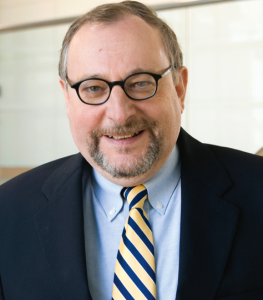Survival is the result of lung cancer screening
During Lung Cancer Awareness Month (LCAM) in November, memo inOncology spoke with Dr. Fred Hirsch, who is CEO of the International Association for the Study of Lung Cancer (IASLC) and professor at the University of Colorado School of Medicine in Denver, USA. The Lung Cancer Awareness Month Coali-tion (LCAMC) is a group of more than 20 global non-profit organisations focused on improving outcomes for patients with thoracic cancers, led by the IASLC.
What are the reasons why lung cancer screening is only implemented in a fraction of high-risk individuals who would qualify for it?
The US Preventive Services Task Force recommends that patients aged 55 to 80 years who have a 30 pack-year smoking history and currently smoke or have quit smoking within the past 15 years are screened for lung cancer using low-dose CT scans. These guidelines are also supported by the Centers for Medicaid and Medicare Services (CMS). The basis for that recommendation was the randomised National Lung Screening Trial (NLST) study, which compared low-dose CT screening with conventional chest X-ray screening, showing a reduction in lung cancer mortality of 20 % for CT scans versus X-ray scans.
However, implementation of these screening guidelines in the United States has been very slow. The reason for that can be multifold; one main reason is a lack of education about guidelines among the general public and health care personnel. Another reason might be the high false-positive rate that can occur with CT scans (most CT detected nodules are not malignant, and some individuals have to undergo further diagnostic work-up to discover that their nodules are benign). Physicians might be wary of using low-dose CT scans given the false-positive rate.
In many other countries, screening guidelines do not yet exist, as they wait for more scientific evidence based on other studies. Regardless of the country, we need to encourage the creation and implementation of comprehensive guidelines so that we can detect lung cancer in earlier stages when treatment is most effective. It is critical to educate physicians on the tremendous impact of implementing guidelines, as well as the public on risk factors that make them eligible for screening. If successful, we can significantly reduce the mortality rate from lung cancer around the world.
What can be done to educate commu-nity physicians about the range of modern treatment options that have emerged in rapid succession over the last few years?
In recent years, we have seen tremendous success with new treatment methods like precision medicine and immunotherapies. Through research of tumor cells, scientists are identifying specific abnormalities that fuel the growth of tumours. With that knowledge, doctors are developing unique, precision treatments that target abnormalities. We are also seeing the development of exciting medicines that activate patients’ immune systems to better identify and attack cancer cells. While these treatments are still emerging, results from clinical trials have been very promising. Unfortunately, these successes are often limited to specific countries and academic centers where the research community is vibrant. It is critical that we are sharing the newest advances with phy-sicians across the world and giving them the latest scientific knowledge that they can leverage with their own patients.
Where do you see obstacles to setting up clinical lung cancer trials?
One of the biggest challenges we face in setting up more clinical trials is a lack of patient participation. In fact, only 3 to 5 % of lung cancer patients in the US participate in clinical trials. Often times, patients and their physicians are not aware of potential trials – either because they simply do not know of their existence or because they are not up-to-speed on the latest applicable research. Some patients only become aware of clinical trial options after they have undergone other treatments, which in many cases, disqualifies them from trials in the future.
Another major obstacle is the lack of sufficient funding and research for lung cancer across the globe. Even though lung cancer is responsible for 32 % of cancer deaths, it only receives 10 % of cancer research funding. This gap in funding results in too few clinical studies initiated by clinical investigators.
Fred R. Hirsch, MD, PhD CEO of the IASLC Professor, University of Colorado School of Medicine, Denver, Colorado, USA





